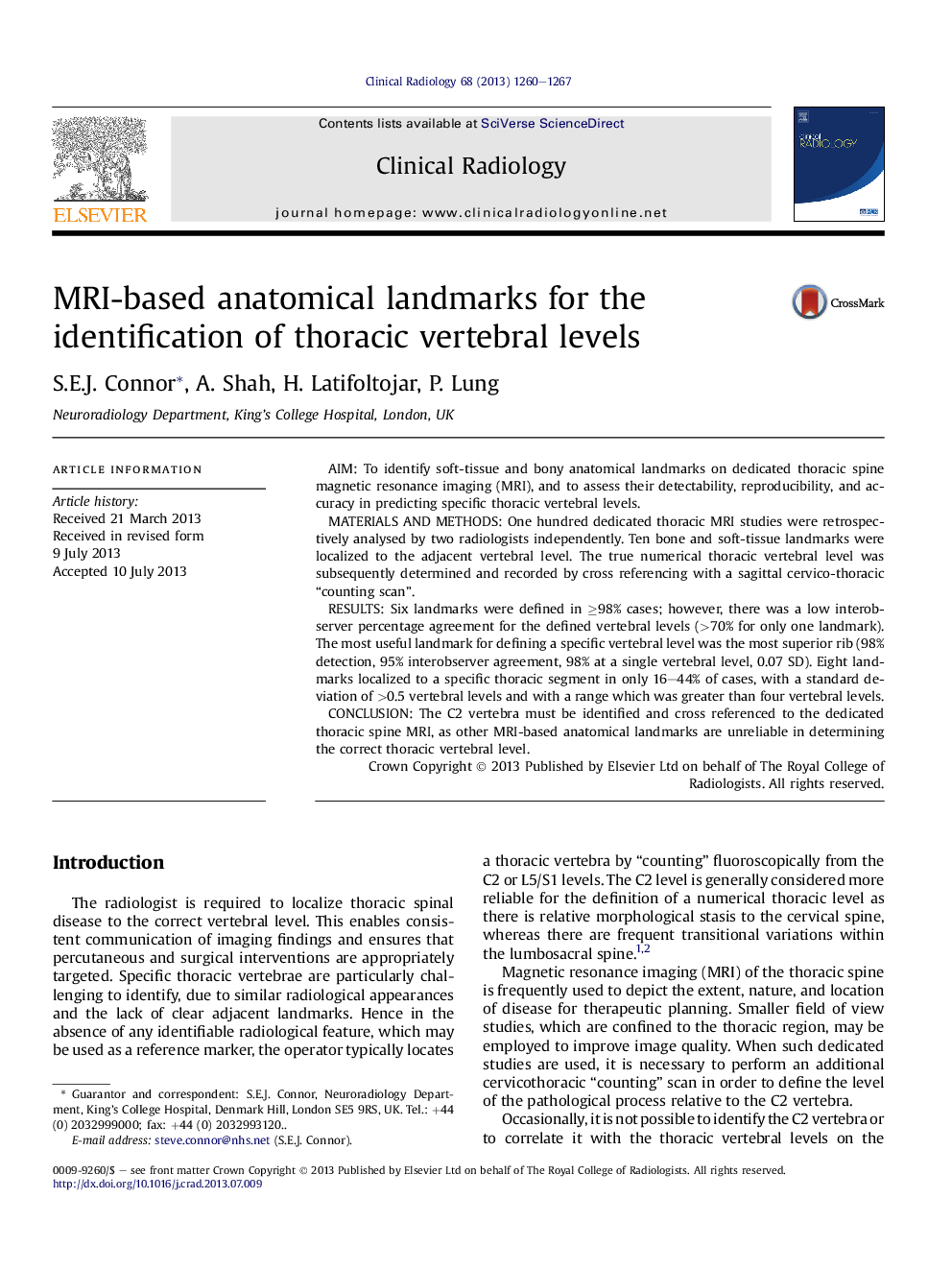| Article ID | Journal | Published Year | Pages | File Type |
|---|---|---|---|---|
| 3982372 | Clinical Radiology | 2013 | 8 Pages |
AimTo identify soft-tissue and bony anatomical landmarks on dedicated thoracic spine magnetic resonance imaging (MRI), and to assess their detectability, reproducibility, and accuracy in predicting specific thoracic vertebral levels.Materials and methodsOne hundred dedicated thoracic MRI studies were retrospectively analysed by two radiologists independently. Ten bone and soft-tissue landmarks were localized to the adjacent vertebral level. The true numerical thoracic vertebral level was subsequently determined and recorded by cross referencing with a sagittal cervico-thoracic “counting scan”.ResultsSix landmarks were defined in ≥98% cases; however, there was a low interobserver percentage agreement for the defined vertebral levels (>70% for only one landmark). The most useful landmark for defining a specific vertebral level was the most superior rib (98% detection, 95% interobserver agreement, 98% at a single vertebral level, 0.07 SD). Eight landmarks localized to a specific thoracic segment in only 16–44% of cases, with a standard deviation of >0.5 vertebral levels and with a range which was greater than four vertebral levels.ConclusionThe C2 vertebra must be identified and cross referenced to the dedicated thoracic spine MRI, as other MRI-based anatomical landmarks are unreliable in determining the correct thoracic vertebral level.
